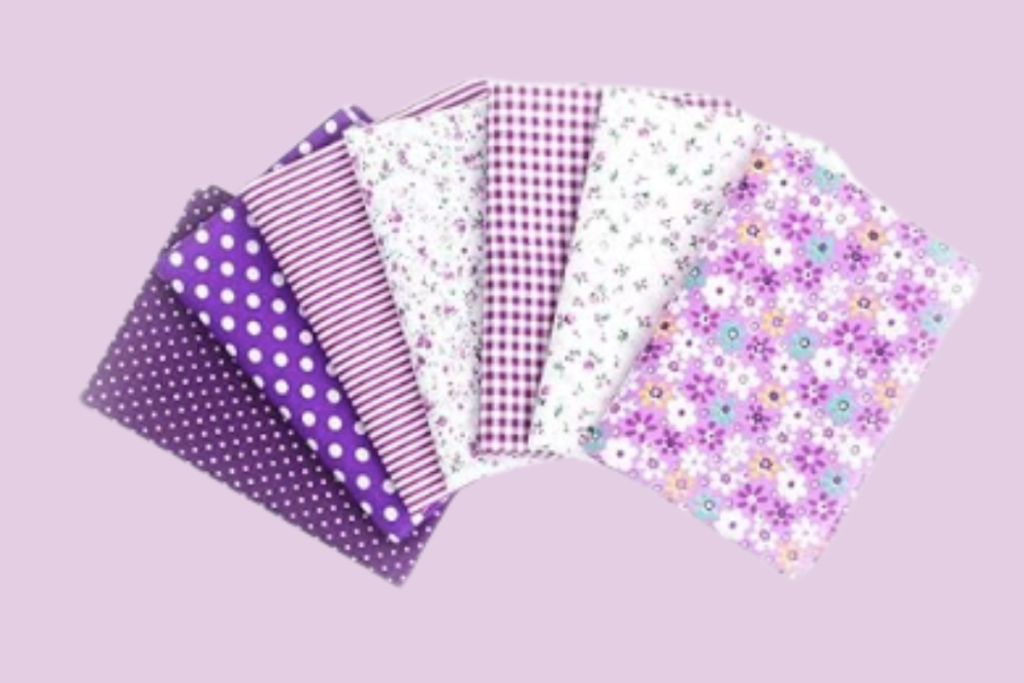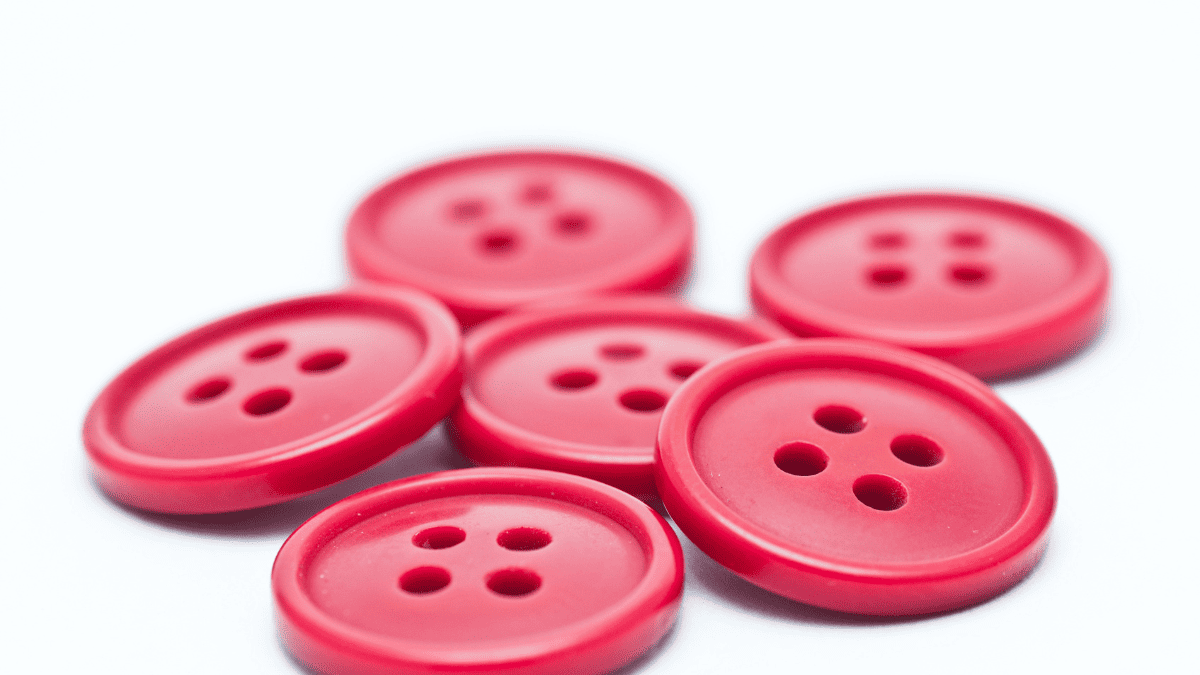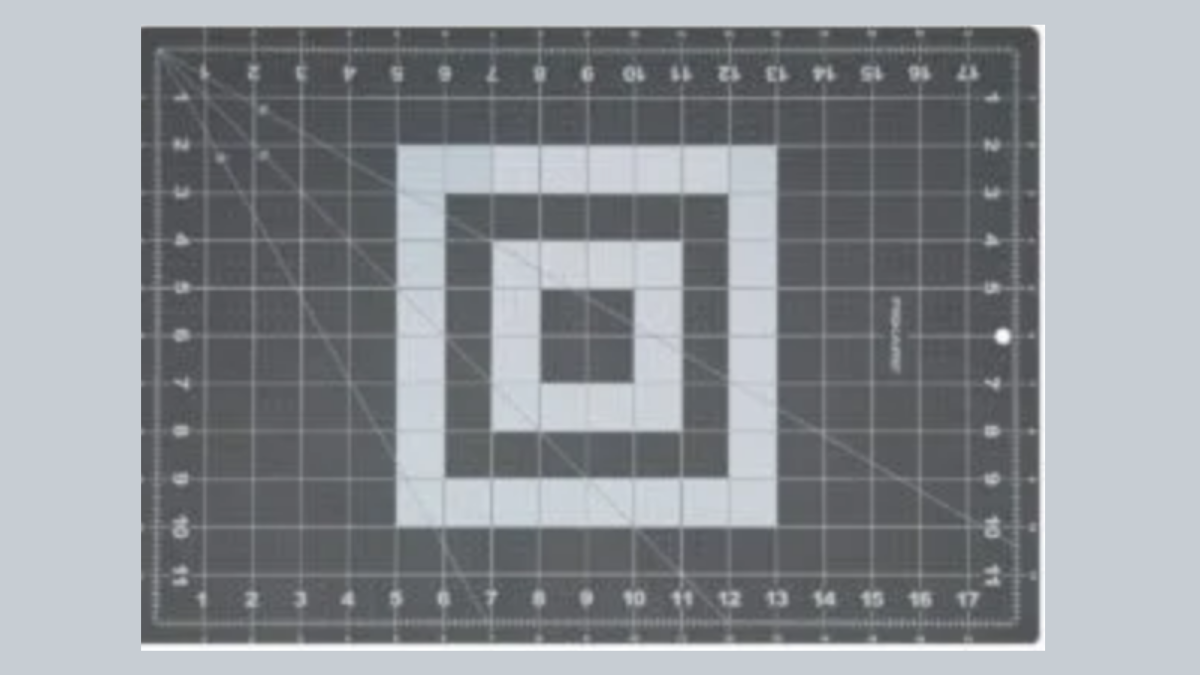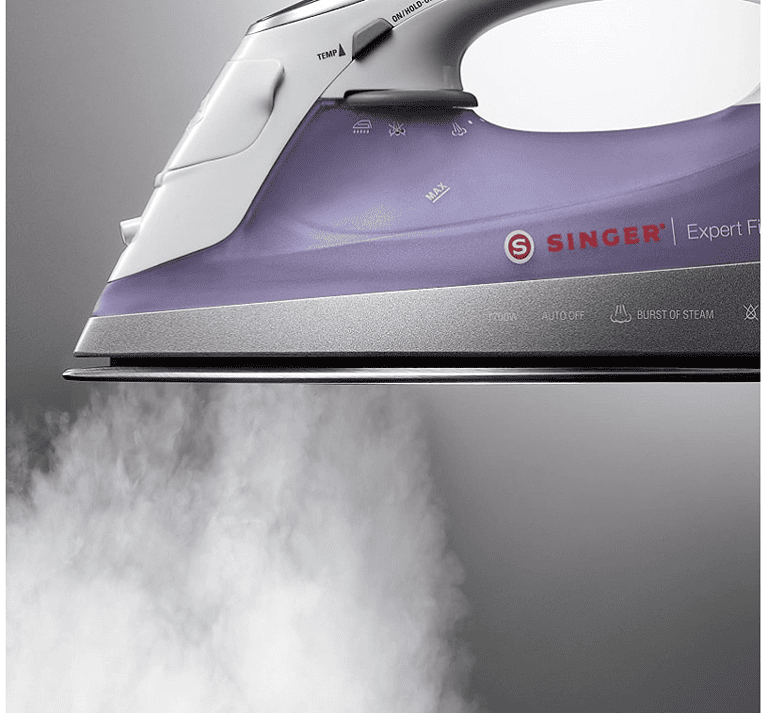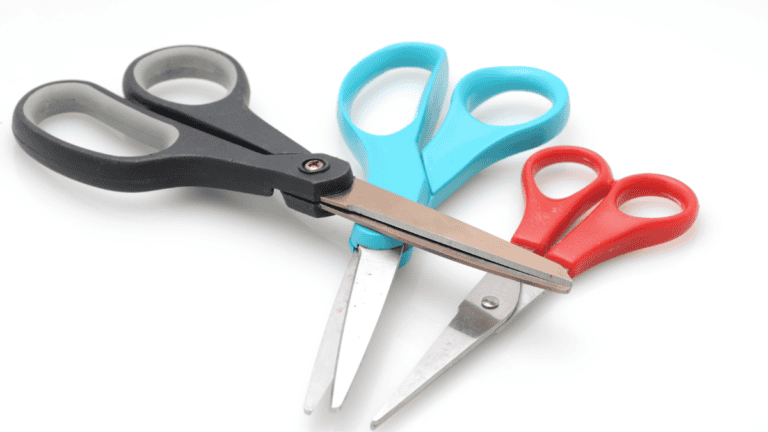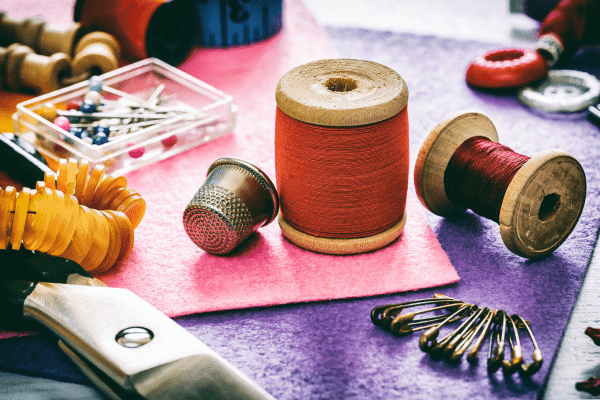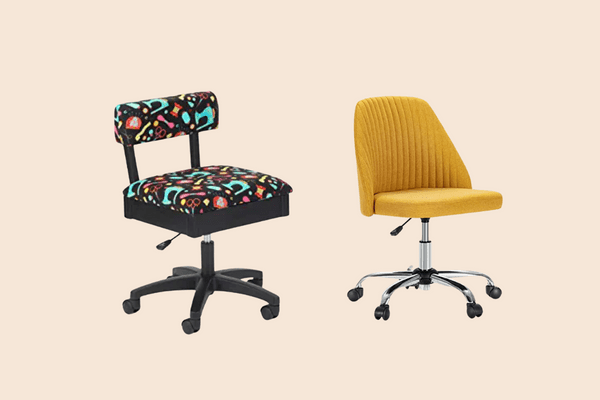Button Sizes: Free Easy Printable Chart For Sewers
Understanding clothing button sizes is key to ensuring the perfect fit and finish for your garments. When you’re replacing a button or designing a piece of clothing, knowing the different sizes and how they match up to various types of apparel can save you time and hassle.
Button sizes are typically measured in lignes (also known as lines), with one ligne equal to 1/40 of an inch, though millimeters are also commonly used.
The size of the button you’ll need depends on its function and the style of the clothing.
While shirt buttons are generally small and discreet, coat buttons tend to be larger and more prominent. It’s not just about aesthetics; the right size button ensures functionality.
For example, a button that’s too large can be difficult to fasten in a smaller buttonhole, while one that’s too small may slip out easily and not hold the garment closed properly.
Before diving into the world of button sizes, it’s essential for you to know that buttons are measured using a traditional unit called “ligne.” It’s a term you’ll encounter often when matching sizes for your sewing projects.
Standard Button Sizes
Standard button sizes are often cited in “ligne” or lines, with one ligne equalling approximately 1/40 inch (0.635 mm).
This traditional unit helps you get an exact match for your clothing. Popular button sizes, like the 24-ligne, are widely used for shirts and blouses, while larger sizes, such as the 32-ligne, are common for coats and jackets.
Button Dimensions
To measure the diameter of a button, you can use a vernier caliper for precise measurements. Place the jaws of the caliper around the button and read the size from the scale.
This measure is your button’s diameter, which will help you find the right size button for your clothes. Remember that when you talk terms of button size, you’re referring to the button’s diameter, not its circumference.
Button Size Chart
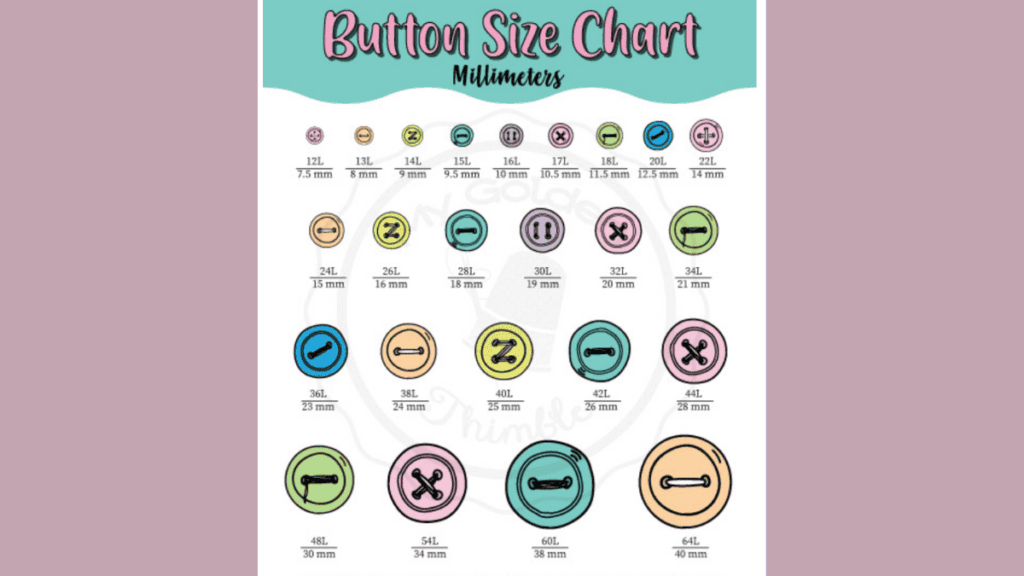
Download Button Size Chart
A free printable button size chart can be incredibly handy. This chart usually includes the size of the button in both ligne and millimeters, providing a visual reference for you to compare your buttons. You can download it on the button above.
Keep this chart on hand whenever you need an exact match for replacing or adding buttons to ensure that you’re choosing the most popular size or a specialized size as needed.
It’s helpful to follow the chart as you learn how to sew a button. Both are crucial skills when sewing.
Button Sizes
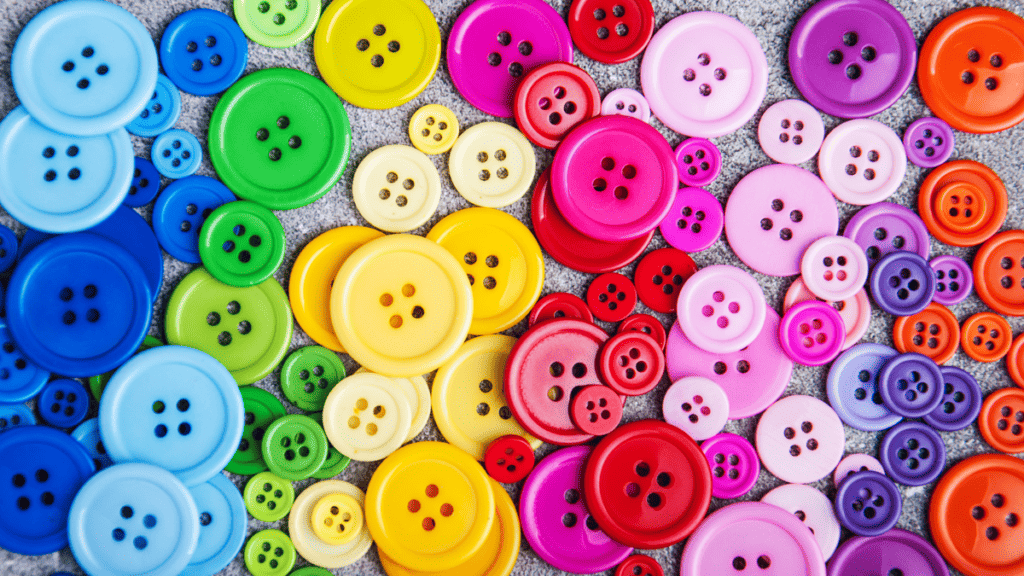
Choosing the right button can be like picking the perfect accessory for your outfit—it’s a small detail that makes a big impact.
Get to know the button size spectrum and the various types of buttons to find what suits your fashion or crafting needs best.
Small to Large: The Size Spectrum
You’ve got a whole range of sizes when it comes to buttons. Think of small buttons as those dainty ones you’d find on delicate blouses—they’re typically under 1/2 inch (12mm) in diameter.
On the flip side, large buttons are your statement pieces, often spotted on coats, measuring over 1 inch (25mm).
Sort of like a volume knob, button sizes move smoothly from smaller to larger across different garments and uses:
- X-Small (< 1/4 inch or 6mm): Perfect for baby clothing, doll clothes.
- Small (1/4 inch to 1/2 inch or 6mm to 12mm): Great for shirts, dresses.
- Medium (1/2 inch to 3/4 inch or 12mm to 19mm): The standard size for a variety of apparel.
- Large (3/4 inch to 1 inch or 19mm to 25mm): Ideal for outerwear, like jackets and coats.
- X-Large (> 1 inch or 25mm): Used for bold fashion statements and accessories.
Button Types
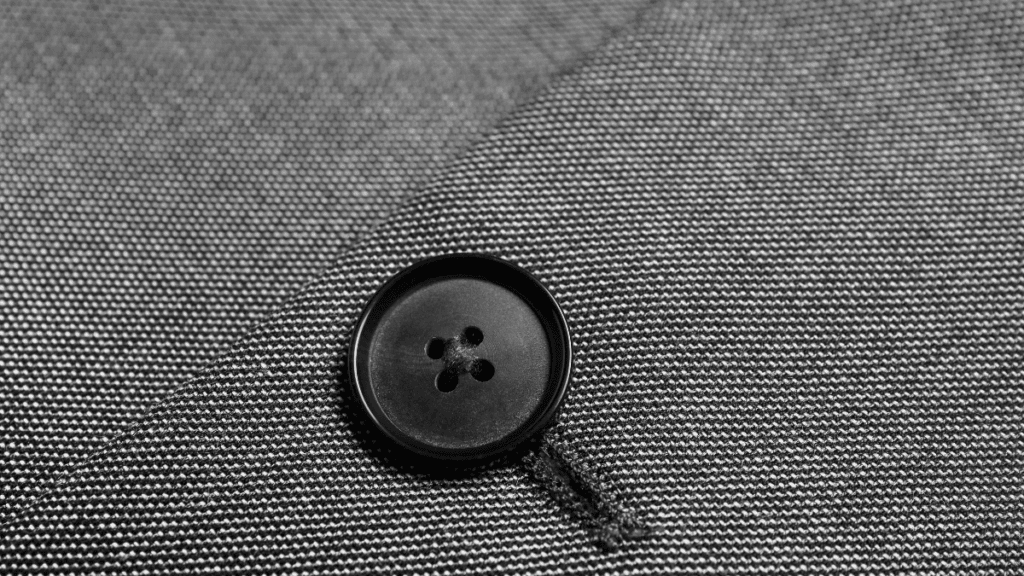
Diving into different types of buttons, you’ve got such a mix to choose from. Leather buttons give you that rich, rustic vibe and typically land in the medium to large size range.
For an upscale touch, designer buttons can range widely in size but often are larger to showcase their intricate designs.
And then there’s the ghost buttons, these clear pieces are subtle yet trendy, coming in various sizes fitting for lightweight fabrics and minimalist aesthetics.
Here’s a quick view of some types:
- Leather buttons: 15mm-25mm; used for jackets, coats, and rustic designs.
- Designer buttons: can range from 14mm for shirts to over 30mm for coats and statement pieces.
- Ghost buttons: common sizes include 10mm-20mm; they’re versatile for both light, sheer fabrics and more structured pieces.
Remember, whether you’re browsing through smaller buttons for a summer dress or larger buttons for a winter coat, the kind of button you choose adds to your garment’s functionality and style!
Selecting the Right Button Size

When you’re selecting buttons for your clothing, it’s crucial to consider their functionality, the statement they make, and their compatibility with the garment’s fabric and design.
Finding the right button size for your clothing projects is akin to picking the perfect accessory for an outfit—it completes the look.
For a shirt, smaller buttons usually around 0.5 inches can be suitable, while coats may require larger width buttons of an inch or more for a balanced appearance and practical use.
Since the 9th century, buttons have been used not just for function but as decorative elements. The size of a quarter, roughly 1 inch, was often seen on historical garments, making a statement of wealth and craftsmanship.
In some cultures, larger buttons denote status, while in others, simplicity reigns with smaller, understated buttons.
When you’re selecting a button for everyday clothes, think practical. There’s no such thing as the one best size, but here’s what’s typically good:
- Shirts: Buttons around 3/8″ (9mm) are manageable.
- Coats & Jackets: 3/4″ – 1 1/4″ (19-32mm):
- Trousers: Consider 5/8″ (16mm) for a secure waistband.
- Always check the buttonhole size to ensure your button isn’t too big or small.
Button Classification
Buttons are classified by types like round, square button, and novelty and by Ligne, a standard measurement for button sizes.
Remember, choosing different button sizes impacts both the aesthetics and function of your garment. Select wisely to ensure the best fit and look for your project.
Sewing Basics
As you learn to sew, there are some basics you need to know. Here are just a few articles to help you sew better.
Best scissors for Sewing
Fabric Giveaway
Enter our monthly fabric giveaway. Simply complete the tasks daily and you will be entered into the drawing. Winner will be randomly drawn on the first day of the month and notified via email
